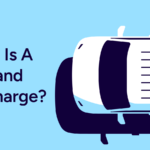Creating a blog post is more than just brainstorming, writing, and clicking the (publish) button. To get your blog posts seen by as many people as possible, you need to write about engaging topics that search engines can easily understand.
Search engine optimization of your blog, or blog SEO, means making sure that your blog’s content, structure, and technical features are relevant to search engine algorithms and crawlable. If you do it right, you have a good chance of getting free organic search traffic.
An SEO friendly blog can mean the difference between a few clicks and thousands of clicks. Learn why his SEO for your blog is important and tips to optimize your blog like a pro.
Why is blog SEO important?
Optimizing your blog can accomplish several important things. First, Google’s top five front page positions generate 70% of all clicks. Implementing a blog SEO strategy will help you rank in high-value spots for relevant search queries, making it easier for visitors to find your blog in search results for terms within your industry or niche.
If your blog post ranks in a high search query, you could receive thousands of visitors from search engine traffic. If you rely on paid channels for similar traffic from Google Search, you may have to pay hundreds, if not thousands, of dollars to attract visitors.
Good SEO also improves your brand image. First page rankings let searchers know that your brand produces quality content. After all, it’s not just any old site that gets the coveted top spot. search ranking. If you continue to post quality content, users will trust you, visit your site more, and engage with your content, further demonstrating your authority to Google and other search engines. It will be.
How to implement effective blog SEO
- Select blog topics using keyword research
- Intuitively review topics based on your business goals and expertise
- Create a structured outline
- Use strategic keywords throughout your articles
- write an effective title
- Include internal links
- Add original multimedia content
- Monitor technical issues
- Update old content
To increase your blog’s visibility in search results, consider the following steps:
1. Use keyword research to choose your blog topic
Rather than choosing a topic according to your personal interests or intuition, follow the data. Use SEO tools such as: Ahrefs and SEMRush To understand the topics people are searching for in your niche and their search volumes.
When doing keyword research, start by identifying broad target keywords related to your product, then continue drilling down to generate a list of long-tail keywords. By combining short-tail and long-tail keywords, you can be sure to cast a wide net.
For example, let’s say your business sells dog supplies such as: Earth rating In that case, search for broad keyword phrases like “dog chew toys” and identify long-tail keywords to write blog posts about, like “what are dog chew toys made of?”
2. Gut check the topic based on your business goals and expertise
Search volume can help you consider what content to publish on your blog, but make sure it aligns with your business goals and expertise.
Returning to the dog chew toy example, it only makes business sense for Earth Rated to produce this article if the product is useful to our readers. For example, if an article says that rubber chew toys are best for dogs, but Earth Rated doesn’t sell them, it’s not going to be a very informative experience for readers (and Earth Rated Rated probably won’t make many sales).
So before you write an article, ask yourself these two questions:
1. Is this a topic that can provide real value to our readers?
2. Will ranking for this keyword actually solve a customer problem, generate new sales, or build relevant brand awareness?
If the answer to both of these questions is not yes, then you should look for another topic.
(Incidentally, Earth Rated also sells rubber dog chew toys.)
3. Create a structured outline
Each blog you write should be optimized for just one target keyword. In the example above, the target keyword would be “What are dog chew toys made of?” Include your target keywords in the following areas:
- Main header (or H1)
- title tag
- URL
- Post introduction
- of meta description
From there, choose 2-3 supporting keywords and select FAQs related to your target keywords to flesh out your blog content outline and comprehensively cover your topic. SEO tools can help here too. Using a header hierarchy when outlining your content makes it easier for search engines to crawl your posts and understand their relevance to your target term.
4. Use strategic keywords throughout your articles
Search engine algorithms use keywords to understand the relevance of articles. Users can also search for information using specific keywords. Therefore, include relevant keywords in your blog posts so that the algorithm understands what your content is about. This also increases your chances of appearing in the SERPs (Search engine results page) when a user searches Related keywords to the target keyword.
Modern search engines understand semantics and synonyms, so you don’t need to set keywords. Instead, include keywords naturally in your writing.If you get stuck, use tools like surfer Create an SEO overview and guide you on the right keywords to use and their frequency.
“Use on-page SEO optimization tools as a guide, not a force,” says Kyle Risley, head of SEO at Shopify. “It helps highlight areas of the topic that you forgot to cover, making the article more useful to the reader. If a recommendation makes sense, include it. If not, skip it. I don’t mind.”
For a blog about dog chew toys, strategic keywords include “chew toys safe for dogs,” “choking hazard,” and “dog toys to avoid.”
5. Write an effective blog title
It’s one thing to rank, but it’s another to get people to click through and read your blog. Not only does a captivating blog post title immediately tell search engines about the nature of your content, but a descriptive title also makes people want to click on it in the Google SERPs. Click-through rate (CTR) is important. The higher your CTR, the more search engines will consider your post to be trustworthy and the higher your ranking will be.
To create an effective title, front load your target keyword and keep it to 55 characters or less to avoid being cut off in the SERPs. For example, “What are dog chew toys made of? 5 Ingredients to Avoid” is a descriptive and eye-catching headline of 55 characters or less.
6. Include internal links
Internal links create contextual connections between new and existing blog posts and help search engines understand your expertise in a particular field. Internal links can also be used to show users more related content or to find additional content of interest.
7. Add original multimedia content
Multimedia content is anything that goes beyond the written word, such as images, videos, interactive elements, and infographics. They capture the reader’s attention, clarify your writing, and demonstrate your expertise.
For example, in a comparison article, an infographic that compares all the options listed in the blog post or a diagram that simplifies a complex concept might be a useful addition. Videos and interactive elements like polls and polls allow readers to stay on the page while they watch the video or take part in the survey.
These all indicate high engagement with search engines, which can lead to better rankings. Ideally, multimedia should be original.Use a program like Kamba Create professional branded graphics quickly and easily.
8. Monitor technical issues
Your blog posts may be the most relevant and engaging, but if your site has technical issues, your efforts may not be worth it. Technical SEO Refers to the behind-the-scenes aspects of a site that affect a page’s visibility, crawlability, and indexability.
For example, if you have a beautifully optimized blog post with original videos, good structure, and internal links, but your website loads very slowly or is too buggy to use on mobile devices. , search engines may miss your article in the rankings due to its unfriendly user experience. .
Some technical SEO issues to be aware of include:
- page speed
- Mobile friendliness
- website architecture
- Duplicate content
- safety
- Broken links and 404 errors
- Image alt text
- accessibility
9. Update old content
Over time, your content may rank higher because search engines may prioritize new content. To avoid visibility loss, update old content with new information every 12 to 16 months to signal freshness to search engines. Updating outdated content improves the user experience and also establishes trust. Are you more likely to trust a blog that gives you tips on clothing trends from two years ago or one that talks about the latest trends?
Blog SEO FAQ
What is blog SEO?
Blog SEO is the practice of fine-tuning your blog posts so that search engine crawlers can efficiently index your pages and rank their links higher on search engine results pages. Tactics include adding relevant keywords, structuring your posts for easy understanding, and including original multimedia content.
How can I improve my blog’s SEO?
You can improve your blog’s searchability by combining: On-page SEO Tactics like incorporating relevant keywords in your copy and meta description, and off-page tactics like building backlinks and improving your site’s technical features.
Is blogging good for SEO?
Yes, blogging is a great way to create content and boost your site’s SEO, allowing you to increase traffic to your site while showing authority, relevance, and trustworthiness to search engines.







